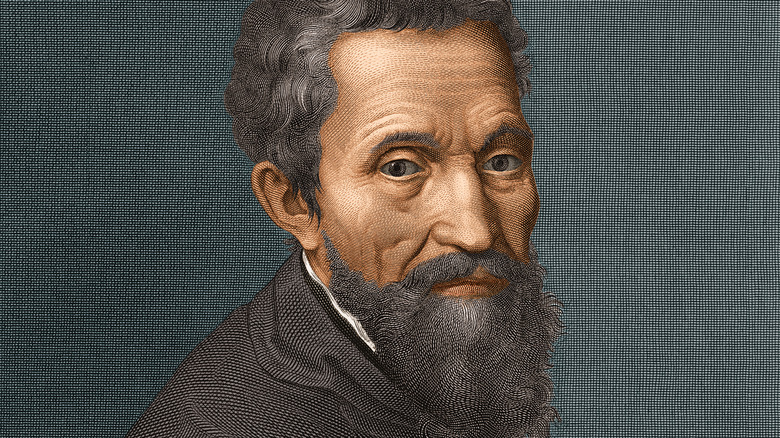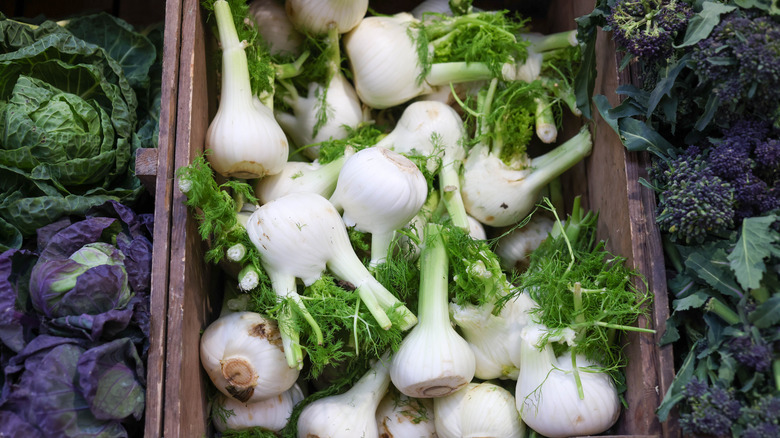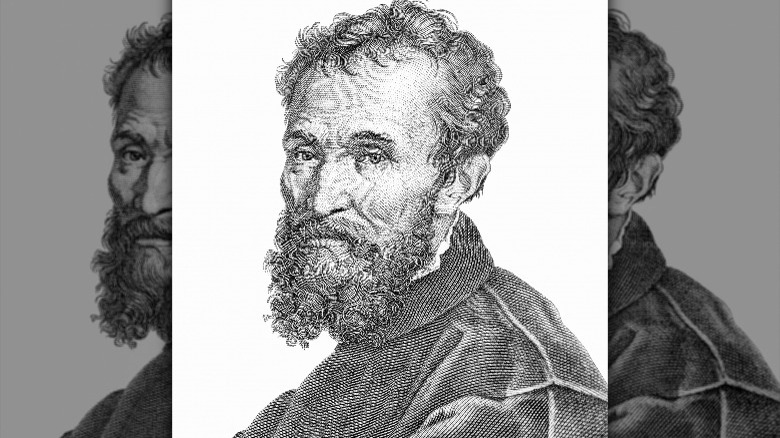Michelangelo's Grocery List, And The Reason He Sketched It
Have you ever looked up at the Sistine Chapel or seen Michelangelo's David and wondered what the artist was munching on at the time? Well wonder no more, because one of Michelangelo's grocery lists was preserved and is on display at the Casa Buonarroti museum in Florence, Italy.
Like most everyone else in 16th century Italy, Michelangelo ate a lot of bread and fish, while washing it down with some wine. What is unique about Michelangelo's grocery list, however, is that he illustrated it. This list was accompanied by doodles of the food he wanted (plus the number of each item) because his servant was illiterate. According to Casa Buonarroti, Michelangelo hand wrote — and illustrated — his grocery list for his servant to take into the marketplace. Michelangelo likely went over the list with his servant beforehand, but sketched out the ingredients to help remind the servant when he was shopping.
What was on Michelangelo's grocery list
Art genius or not, a man still needs to eat. Michelangelo's grocery list included 15 items — consisting of vegetables, fish, wine, and bread — and was broken down as a sort of meal plan, displaying what he would be eating across three separate meals. His illustrations were rather specific in this regard as he drew two bread rolls to be had for one meal, four rolls for another, and six rolls for the final meal.
He also depicted two dishes of stewed fennel side by side – suggesting perhaps he would be dining with someone — along with bowls that overflowed with salad and anchovies. Michelangelo also depicted a smaller glass of wine next to a larger jug to indicate he wanted a smaller amount of dry wine for that meal. The one thing he did not draw was the two plates of tortelli he wanted to dine on — he simply asked for the pasta in writing. One theory suggests that it wasn't illustrated because the servant's wife was tasked to make it fresh for the artist.
According to Gillian Riley in her book, "The Oxford Guide to Italian Food," this list lends itself to a relatively upscale dinner menu. Although Michelangelo had a reputation for being frugal, he was used to dining with nobility, and his shopping list shows it.
The significance of Michelangelo's grocery list
The grocery list was once displayed in an exhibition at the Seattle Art Museum alongside other sketches that showed his creative process in designing the Sistine Chapel ceiling and the Last Judgment fresco. It now resides back at Casa Buonarroti in Florence, where the artist lived for much of his life. Michelangelo was a shrewd businessman who was very protective of his personal image. He hated anyone seeing his work if it was less than perfect, and therefore burned all notes, cartoons, and other papers in 1518 and again in 1564, so only 600 of these papers remain today.
The fact that this list survived is a rarity in and of itself, but the glimpse into Michelangelo's everyday life makes the piece all the more fascinating. As many of us do, Michelangelo wrote his grocery list on a scrap piece of paper — the back of a letter in this case. The letter was dated March 18, 1518, giving us a good indication of when the list was created — during Lent. Since Michelangelo was a devout Catholic, he likely gave up meat during this time, relying on the traditional vegetables and fish for sustenance during this time. Michelangelo's works of art prove how talented he was, but his grocery list shows us he wasn't just an art god, but a human just like us.



